101017_YKBP_A4.pdf




4 Broadcaster Press
October 10, 2017 www.broadcasteronline.com
Home of Great Results
since 1934
201 W Cherry St. • Vermillion, SD • Phone: 624-4429 Fax: 624-2696 • BroadcasterOnline.com
Choosing Quality
STEM Activities
By Christine Wood
SDSU Extension 4-H Science Technology Engineering and
Math (STEM) Field Specialist
As we kick-off a new 4-H year, it is time to begin planning
and preparing for new and exciting ways to engage youth
during club meetings, afterschool programs, and camps.
Many will choose to incorporate activities and lessons
related to STEM disciplines. However, choosing a quality
STEM activity can be a challenge. A quick Google search
for ‘STEM activities for youth’ produces an overwhelming
number of results, how do you know which are quality?
Quality Activities and Lessons
As you begin scanning activities, you will find that some
are simply busy work, others are very exciting but provide
no content, and others are loaded with content yet lack
engaging elements. Quality STEM activities provide youth
with opportunities to become engaged in science inquiry
and the engineering design process as they explore various
STEM concepts.
• To determine if an activity or lesson is quality you can
utilize the following questions:
• Is the activity appropriate for the age group I am working with? (For information on age appropriateness, refer to
the Ages and Stages of Youth Development).
• Is the activity relevant or of interest to the youth I am
working with?
• Is the activity hands-on?
• Is there additional background knowledge needed? Is it
easy to locate?
• Does the activity address education standards?
• Are you providing youth with opportunities to improve
their Science Abilities?
Predict, Hypothesize, Evaluate, State a Problem, Research a Problem, Test, Problem Solve, Design Solutions,
Measure, Collect Data, Draw/Design, Build/Construct, Use
Tools, Observe, Communicate, Organize, Infer, Question,
Plan Investigation, Summarize/Relate, Invent/Implement Solutions, Interpret/Analyze/Reason, Categorize/Order/Classify, Model/Graph/Use Numbers, Troubleshoot, Redesign,
Optimize, Collaborate, Compare
• Are you providing opportunities for youth to experience and improve in the essential elements?
• Are activities led with an experiential approach to
learning?
• Are activities using inquiry to foster the natural creativity and curiosity of youth?
Where can you find quality STEM activities and
lessons?
There are multitudes of locations that you can find quality STEM lessons or activities at a reasonable cost, but here
are some of our favorites:
• National 4-H Curriculum
Youth activity guides and kits for a variety of STEM topics that build life skills as well as content knowledge.
• Cornell University 4-H Science Toolkit
Grab and go lessons that can be taught with items found
around the home and will take 45-90 minutes to complete.
• Design Squad Nation
Activities, videos, games, and contests that give kids a
stronger understanding of the design process and the connection between engineering and our lives.
• Dicovere
Engineering based lessons and supplementary materials.
• Engineering is Elementary
Curriculum for in-school and afterschool programs,
grades 1-8.
• Grow For It
Resources and opportunities to connect youth and
educators to issues in agriculture and natural resources in
meaningful ways.
• How to SMILE.ORG
Learning activities, tools, and services designed especially for those who teach school-aged children in nonclassroom settings.
• NASA Education
A-Z list of education opportunities, lessons, and activities for educators and youth.
• NASA Summer of Innovation
NASA-themed STEM activities and themed units that are
great for camps.
• Science Buddies
Free project ideas and help in all areas of science from
physics to food science and music to microbiology.
• STEM Works
Resource for teachers, mentors, parents, STEM professionals, volunteers, and everyone passionate about getting
children eager to learn about science, technology, engineering, and math.
• Teach Engineering
Standard aligned engineering lessons and hands-on
activities.
Wisconsin Fast Plants
Open education about plants and their roles as individuals, populations, in communities and in ecosystems.
VERMILLION SCHOOL DISTRICT
Fall 2017 Parent/Teacher Conferences
Thursday, October 26th
2:30pm – 8pm
Friday, October 27th
8am – 1pm
There will be an early dismissal for the students
on Thursday, October 26th as follows:
Austin and Jolley Elementary Schools – 1:50pm
Middle and High School – 2pm
There will be no school on Friday, October 27th
Teacher In-Service will be held after
conferences from 2pm - 3:45pm
Effective Meeting
Communication
Begins With the
Principles
By Peggy Schlechter
SDSU Extension Community Vitality Field Specialist
Maybe you call them ground rules. I prefer to refer
to them as guiding principles. To me, rules sound like
something that some people just like to break so I tend
to avoid that term. It doesn’t matter what you call them,
guidelines established at the beginning of a meeting can
allow for more effective communication and more productive meetings. Creating these rules or principles may take
5-10 minutes at the beginning of a meeting, but the investment in time can result in more productive meetings. It’s
most helpful when those principles can be posted at each
meeting so that they are in clear view of participants.
Why Set Guiding Principles?
Does every meeting require guiding principles? Probably not; however if you have a group of people who
haven’t worked together before, it can help to determine
expectations at a meeting. Once a work group has formed
a list that everyone can work with, that same list can use
used at future group meetings. Simply a reminder of the
list is all it takes as well as a reminder that someone can
discuss a change in the guiding principles at any time.
Currently, I participate in a group that has the guiding
principles posted at every meeting. At the beginning of
each meeting, the meeting facilitator reads through the
principles and asks participants if those still work for us.
Sometimes I think that is a bit much as the same people
participate on this committee that meets once a month;
however I will admit that it gives me time to really focus
on the meeting and business at hand as they are read.
One of the principles that group uses to leave the meeting with a clear sense of next steps. This helps us move
forward from meeting to meeting and helps us make sure
we understand the action steps we should be working
towards. I do think that principle helps keep our meetings
to be meetings just for the sake of meeting. We actually
make progress from meeting to meeting.
Meeting Benefits
Guiding principles can especially be useful when a
group has experienced some trust issues or controversial
topics may be discussed. In those instances, the principles can help create a safe place to move the organization
or group forward. If you have been in a meeting where
there are conflicts, you know it can be helpful to have
something to point to and guide participants. In these
situations, a principle that reminds us to attack the problem, not the person, can be helpful.
Perhaps you have been in a meeting where participants aren’t paying attention. Maybe a participant is
always looking at his/her smart phone, or a couple of
participants are visiting about other topics. As those
actions can be distracting, they can keep the business
of the meeting from moving a long in a timely manner.
In these situations, there are several principles that can
be helpful. Those could include: No one-on-one side
meetings or conversations. Stay mentally and physically
present. Listen actively to others. Do not interrupt other
participants.
Recently I facilitated a meeting where I had a poster
of common guiding principles. In this situation, I read
through the principles and asked if they made sense? I
also asked if they wanted to add or change or remove
any of them. This technique can save some time when it
may be a meeting of a group that will only meet once or
twice. As I was getting ready to leave, one of the participants mentioned that she did like having those posted.
If you haven’t used guiding principles or ground rules or
whatever you want to call them, try them at your next
meeting. It may be your most effective meeting yet!
Tell them you saw it in the
Broadcaster!
Tell them you saw it in the
Broadcaster!
624-4429
www.broadcasteronline.com
2901 Broadway, Yankton
605-665-7861
Tell them you saw it in
the Broadcaster!
201 W. Cherry, Vermillion
624-4429
www.broadcasteronline.com
Tell them you saw
it in the
Broadcaster!
201 W. Cherry, Vermillion
624-4429
www.broadcasteronline.com



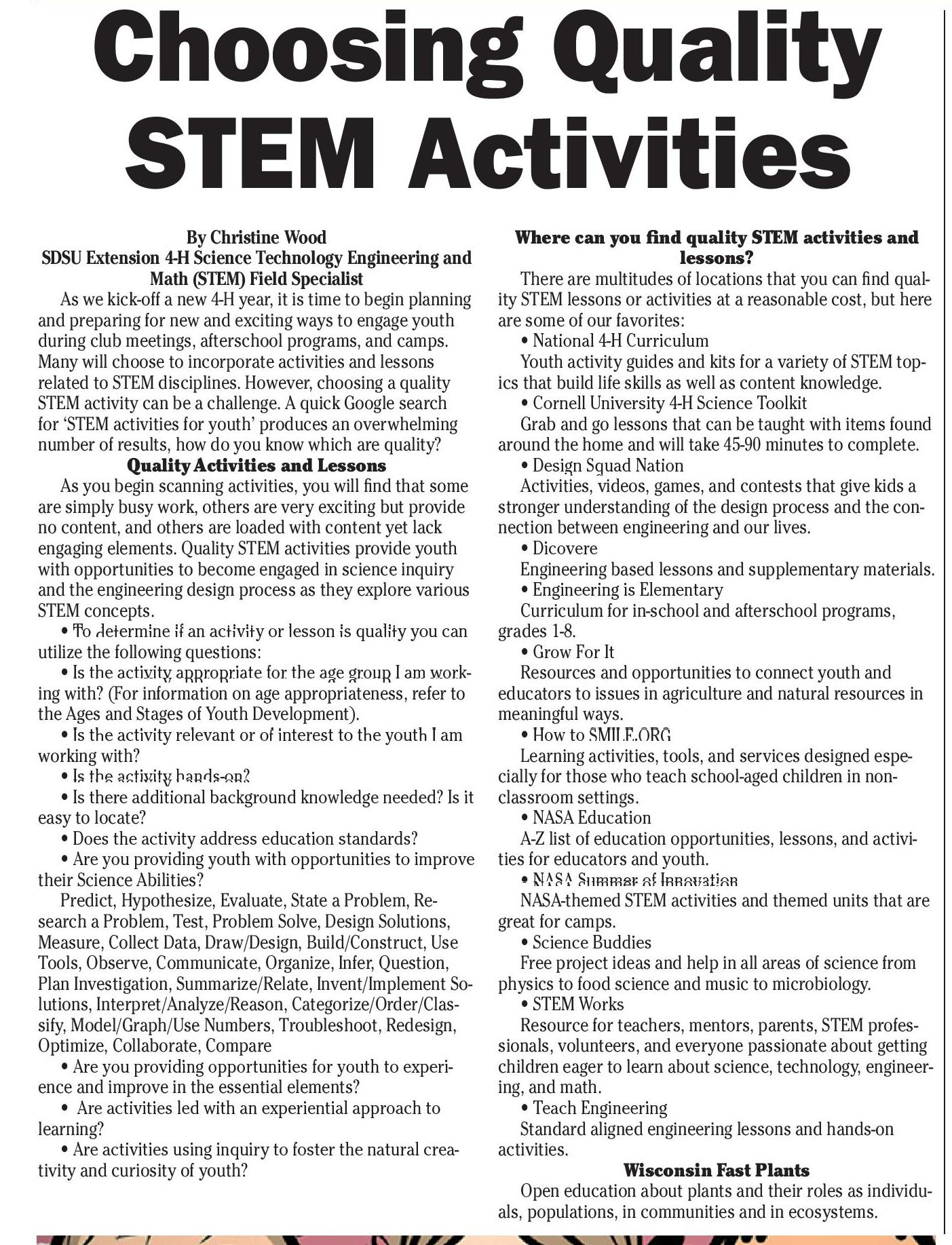


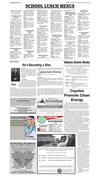
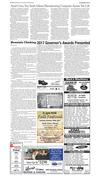


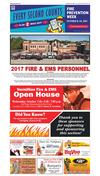
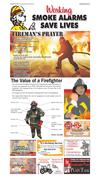
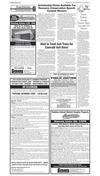

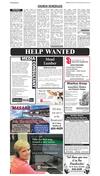


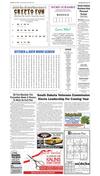

 Previous Page
Previous Page






